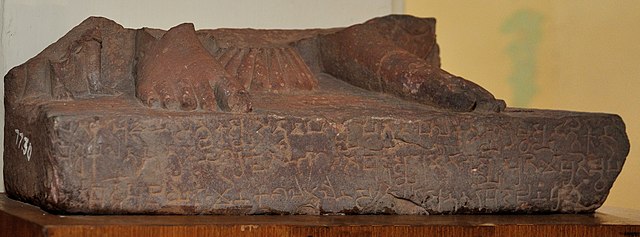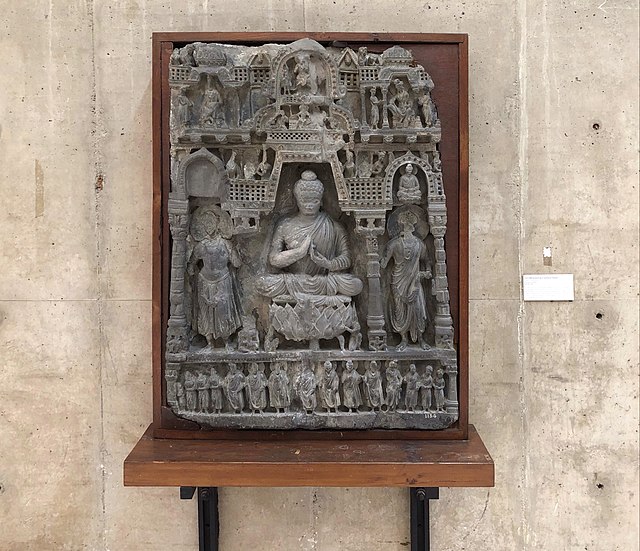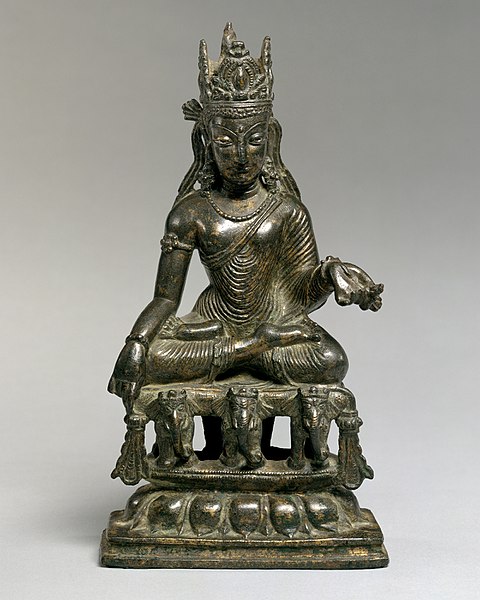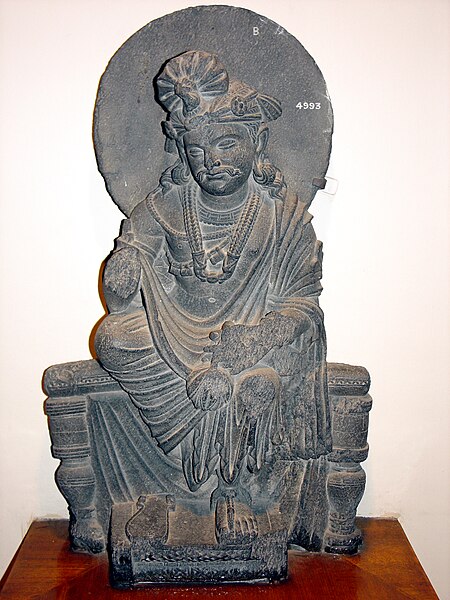Pure Land Buddhism or Pure Land School is a broad branch of Mahayana Buddhism focused on achieving rebirth in a Pure Land. It is one of the most widely practiced traditions of Buddhism in East Asia.
Inscribed pedestal with the first known occurrence of the name of Amitabha Buddha (c. 153 CE). The Brahmi inscription states "Bu-ddha-sya A-mi-tā-bha-sya"; "Of the Buddha Amitabha."
Gandharan sculpture of Amitabha in Sukhavati, 2nd century CE, from Khyber Pakhtunkhwa, Pakistan.
Bronze sculpture of Aksobhya Buddha, Pakistan (Northwest Frontier Province, Swat Valley), 9th century
Amitabha triad in a niche, Baoqingsi temple, Xi'an, Shaanxi province, China, Tang dynasty, dated 703 CE.
Mahāyāna is a term for a broad group of Buddhist traditions, texts, philosophies, and practices developed in ancient India. It is considered one of the three main existing branches of Buddhism, the others being Theravāda and Vajrayāna. Mahāyāna accepts the main scriptures and teachings of early Buddhism but also recognizes various doctrines and texts that are not accepted by Theravada Buddhism as original. These include the Mahāyāna sūtras and their emphasis on the bodhisattva path and Prajñāpāramitā. Vajrayāna or Mantra traditions are a subset of Mahāyāna which makes use of numerous tantric methods Vajrayānists consider to help achieve Buddhahood.
An illustration in a manuscript of the Aṣṭasāhasrikā Prajñāpāramitā Sūtra from Nalanda, depicting the bodhisattva Maitreya, an important figure in Mahāyāna
The Five Tathāgatas in Shishoin Temple (Tokyo). A unique feature of Mahāyāna is the belief that there are multiple Buddhas which are currently teaching the Dharma
Mahāyāna Buddhist triad, including Bodhisattva Maitreya, the Buddha, and Bodhisattva Avalokiteśvara. 2nd–3rd century CE, Gandhāra
Seated Avalokiteshvara bodhisattva. Gandharan, from Loriyan Tangai. Kushan period, 1st – 3rd century CE. Indian Museum, Calcutta








